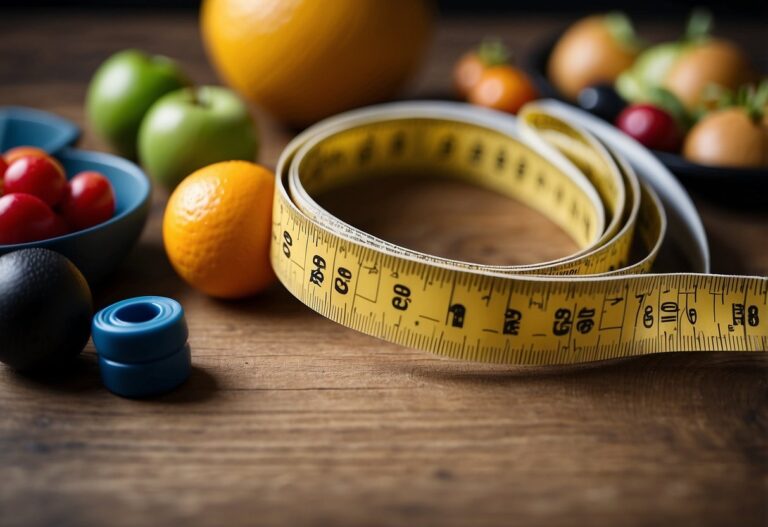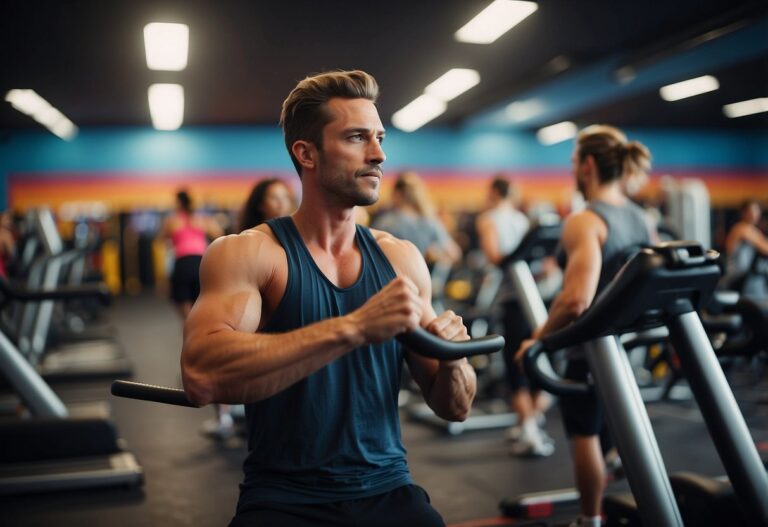If you’ve made the decision to ditch that expensive gym membership or you just want to work out in the privacy of your own home, you may have wondered if you can truly build impressive muscle using only bodyweight exercises and basic home equipment.
While hardcore fitness enthusiasts claim you need heavy barbells and machines to maximize hypertrophy, the truth is that with the right training approach, home workouts absolutely can be enough to build muscle.
Are Home Workouts Enough to Build Muscle?
In a word, YES! Read on to understand how…
Muscle Growth Relies on Challenging Your Muscles
The key driver of muscle growth is progressive overload – consistently forcing the muscles to adapt to greater challenges over time. This requires applying the principles of mechanical tension, metabolic stress, and muscle damage in a systematic progression model to facilitate hypertrophy.
Mechanical Tension
Mechanical tension refers to the physical stress placed on the muscle fibres when an external force is applied during training. This stimulates anabolic muscle protein synthesis pathways.
- Lifting heavier loads provides greater mechanical tension – this is why strength training rep ranges of 1-5 reps build more mass.
- Prolonging time under tension (TUT) by using controlled tempos also maximizes mechanical stress.
- Partial and full range isolation exercises mechanically load specific portions of muscles for complete tension and development.
- Advanced techniques like rest-pause sets, iso-holds, and intra-set stretching provide constant tension to spark growth.
Metabolic Stress
Metabolic stress relates to the buildup of metabolites like lactate from rapid glycogen breakdown during sets. This contributes to the “burning” sensation.
- Short rest intervals of 30-90 seconds maximize metabolic stress by keeping lactate levels elevated.
- Combining strength work like 5 x 5 squats with lighter pump sets and super sets increases lactate and metabolic overload.
- Creatine supplements help rapidly regenerate ATP energy systems to boost anaerobic power and lactate output.
Muscle Damage
The micro trauma to muscle fibers induced by high intensity eccentric loading causes damage that triggers the repair and growth of muscles.
- Plyometric jumps, negatives, sprints, and lowering phases mechanically damage muscle cells due to significant and sudden fiber lengthening under tension.
- Varying exercises regularly prevents excessive repeated stress and facilitates multi-angle damage for thorough hypertrophy.
- Allowing enough recovery between sessions gives the body proper time to fully repair damaged tissues.
Progressive Overload
The systematic application of mechanical tension, metabolic stress, and muscle damage principles over time is called progressive overload – the gradual increase in demands to continue forcing adaptation.
- Lifting heavier weights, doing more reps, reducing rest, increasing volume, and enhancing intensity are all examples of progressive overload.
- Deloads, variation, periodisation, and cycling intensities prevent stagnation so constant progression can continue long-term.
Harnessing mechanical tension, metabolic stress, muscle damage, and progressive overload through tailored programming is the key driver of muscle growth.
How To FORCE Muscle Growth
Bodyweight Training Has Its Challenges
Building muscle at home does have some inherent challenges compared to a fully equipped gym. See this post on The Best Home Gym Equipment on a Budget:
Limited Equipment
It can be difficult to progressively add weight over time without barbells and machines to provide incremental loading. At home, resistance bands can serve as a good substitute for gradually increasing external resistance as you get stronger. You can also focus on improving technique – maintaining perfect form through full ranges of motion and controlled tempos will increase time under tension and muscle activation even without added weight.
Less Stability
Free weights like barbells and dumbbells require more stabilization from smaller accessory muscles compared to machines. This leads to greater muscle activation and strength gains. At home, you can replicate this by intentionally slowing down negatives and keeping lifts controlled. Pausing at peak contraction will force muscles to work harder to maintain positions. This increases tension without heavier weight.
Can’t Max Out
Heavy compound lifts using near-maximal loads are optimal for mechanical tension and muscle growth. Without extremely heavy weights at home, you can get a similar effect by doing very high rep sets (15-20+) focusing on constant tension and time under load. Unilateral single leg/arm moves also increase intensity. The key is keeping Sets challenging by reaching failure with higher reps versus heavy 1-5 rep strength training.
Muscle Isolation Can Be Difficult
Targeting specific muscles can be harder with compound bodyweight moves that hit multiple muscles at once. To better isolate groups, you can manipulate angles, hand positions, tempo, and contractions. For example, incline push ups emphasize upper chest versus standard push ups. Also follow a balanced routine hitting all muscle groups, and focus on mind-muscle connection.
The Best Muscle Building Bodyweight Exercises
While limited, strategic selection of the following bodyweight moves can hit every major muscle effectively:
| Exercise | Variation(s) | Muscles Targeted |
|---|---|---|
| Push Ups | Decline, Diamond, Slow Eccentric | Chest, Shoulders, Triceps |
| Pull Ups | Wide, Narrow | Lats, Traps, Biceps, Triceps |
| Squats | Jump Squat, Bulgarian Split | Quads, Glutes, Hamstrings |
| Lunges | Forward, Reverse, Lateral, Walking | Quads, Glutes, Hamstrings |
| Planks | Straight arm, Elbow, Side, Mountain Climbers | Core (abdominals, hip flexors etc) |
| Dips | Triceps, Chest, Shoulders | |
| Rows | Seated, Standing, Wide | Back, Shoulders |
By combining these exercises in a properly designed training split, you can stimulate growth in even the biggest muscle groups.
7 Best BodyWeight Exercises
Training Strategies to Maximise Muscle Growth
To take your home workouts up a notch, incorporate these advanced training techniques:
- Increase Volume – More sets and shorter rest periods increase time under tension and metabolic stress. Use circuits or super sets too.
- Resistance Bands – Bands allow you to progressively add resistance as you get stronger.
- Unilateral Moves – One-arm and one-leg exercises boost intensity and muscle activation.
- Compound Exercises – Multi-joint moves like push ups work more muscle in coordinated fashion.
- Time Under Tension – Emphasize 3-5 second negatives and paused reps to maximize mechanical stress.
- Progressive Overload – Add reps, sets, or band resistance over time to continually challenge your muscles.
Basic Muscle Building Home Workout Routine
Integrating techniques like the above into a thoughtfully planned workout program is key. Here is one example 4 day upper/lower body split:
Upper Body Push
- Diamond Push ups 3×10
- Close Grip Push ups 3×12
- Dips 3×15
- Overhead Shoulder Press 3×12 (with resistance bands)
- Tricep Extensions 3×15
Lower Body
- Jump Squats 4×8
- Bulgarian Split Squats 3×10 each leg
- Hamstring Curls 3×12 (with resistance band)
- Calf Raises 5×15
Upper Body Pull
- Pull ups 3×5 or Lat Pulldowns 3×10 (with resistance bands)
- Suspension Trainer Rows 3×8
- Bicep Curls 3×10
- Face pulls 3×12
Lower Body
- Shrimp Squats 3×8 each leg
- Reverse Lunges 3×10 each
- Donkey Kicks 3×12 each leg
- Plank 3×60 seconds
This type of routine checks all the boxes for mechanical tension, progressive overload, and hitting all major muscle groups by combining compound strength lifts with targeted isolation exercises.
Support Your Training with Diet
While training is the primary driver of muscle growth, combining your workouts with the right diet and hitting protein targets (0.7-1g per pound of bodyweight daily) gives your body the fuel it needs to recover and build muscle optimally.
Supplements like creatine may provide benefits as well. Ultimately though, nothing can replace consistent, progressive bodyweight training when it comes to sculpting an impressive physique at home.
Benefits of Creatine
- Increased Strength – Creatine has been shown in studies to significantly boost strength gains from training by up to 15% due to its ability to increase muscular power output.
- Muscle Growth – By providing muscles with more rapid ATP energy replenishment, creatine can lead to greater protein synthesis and hypertrophy when combined with proper resistance training.
- Anaerobic Endurance – The increased availability of cellular energy from creatine supplementation enhances performance in high intensity sprints or repeated bouts of anaerobic exercise.
- Recovery – Creatine aids in post-workout recovery by helping muscles rebuild phosphocreatine stores, reducing muscle damage, and rehydrating muscle cells.
- Neuroprotective Effects – Research shows creatine may have neuroprotective benefits for cognitive health by improving energy metabolism in the brain.
The most pronounced benefits are seen in power and strength athletes, as well as those performing high-intensity interval training. The simplest form of supplementation is 3-5 grams of creatine monohydrate powder per day.
Other Creatine resources:
How Do I Know If Creatine Is Working?
How Long Does It Take For Creatine To Work (Explained)
How Much Water Should I Drink With Creatine (Revealed)
Conclusion – Home Workouts Are Absolutely Enough to Build Muscle
While it can be a challenge compared to a fully equipped gym, with creativity and dedication you absolutely can build muscle effectively through home workouts.
By focusing on training principles like progressive overload, using advanced techniques to increase intensity, and creating a complete routine, your home workouts can be enough to stimulate impressive muscle growth over time.
Have realistic expectations for results over a 3-6 month time frame and be patient and consistent, and you will see your physique transform with home-based training.
Frequently Asked Questions
Building muscle with home workouts often raises many questions for people new to training without gym equipment. Here are answers to some top FAQs.
Q: Can I build muscle using only bodyweight exercises?
Yes, by following sound training principles like mechanical tension, progressive overload, and high volume, you can absolutely build impressive muscle mass with calisthenics exercises. The key is high reps, changing angles, and advanced techniques.
Q: How much muscle can I expect to gain from home workouts?
Expect to be able to gain 10-15 pounds of muscle in the first year with proper training, nutrition, and recovery practices. Beyond that, results will depend on your genetics, programming, effort level, and diet. Manage expectations compared to hardcore weight lifting.
Q: Do I need supplements to maximize muscle growth at home?
No supplements are required, but creatine and whey protein can provide benefits. 0.7-1 gram of protein per pound of bodyweight is optimal whether from whole foods or supplements. Caloric surplus is also key so focus on nutrition first before supplements.







